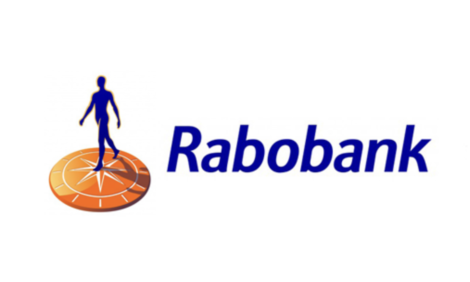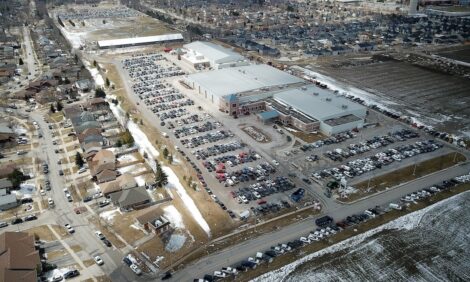



EU Production Quotas in 2015 Could Impact French Dairy Sector
FRANCE - France's dairy industry is expected to be significantly impacted by the termination of the EU production quotas in 2015. There are currently intense discussions within the industry and among policy makers on how to adapt to this major change in policy.Dairy supply in the most productive regions of France has the potential to increase once quotas are abolished, which could result in higher exports of dairy commodities. Dried products production capacity is already being expanded, which may impact US trade, since France and US products (mainly non fat dried milk) compete on world markets.
In addition, France continues to protect the production of high-value products sold under Geographical Indications (GIs), where productivity is lower. France has vigorously defended GIs in the past and will continue to push strongly for wider recognition of GIs during the Transatlantic Trade and Investment Partnership negotiations.
Production – From Commodities to Geographical Indications
France is a leading dairy producer in the EU, accounting for16 per cent of the dairy cow herd (3.6 million heads), 18 per cent of cow milk deliveries to dairies (24.5 million MT), 22 per cent of cheese production (1.9 million MT), 20 per cent of butter production (410,000 MT), 28 per cent of non fat dry milk production (355,000 MT), and 17 per cent of whole dry milk production (115,000 MT).
Large dairy cooperatives and private companies contribute significantly to France’s positive trade balance for agricultural and food products. There are five prominent French dairy groups based internationally: Lactalis (annual sales 12.6 billion euros), Danone (11.2 billion euros), Sodiaal (4.4 billion euros), Bongrain (4.0 billion euros), and Bel (2.5 billion Euros). In addition, there are 15 smaller dairy processors of annual sales higher than 200 million euros each.
Commodities:
France is a producer of both commodities and consumer-oriented products. Commodities (including milk powders, butter oil and dried whey) are principally produced for export and the local food processing industry. The termination of the EU milk production quotas is expected to result in increased milk production, which will likely be used to produce commodities for export, in response to growing world demand.
France is currently expanding its production capacity of dried dairy products, mainly milk powders, dried whey, and infant formula. There are nine drying facilities being built or expanded, with investments worth 300 million Euros. Higher exports of Non-Fat Dried Milk (NFDM) may impact US exports, as US and French products compete on world markets.
Consumer-Oriented Products:
Consumer-oriented products, including cheese, fluid milk, yogurts, and butter, are principally consumed domestically and in other European markets. Approximately 13 per cent of total milk deliveries are processed into high-end products, including 10 per cent sold under Geographical Indications (GIs), two per cent under organic standards, and one per cent under the "Mountain" (in French, "Montagne") appellation. Note: GIs mainly consist of the European Union’s label Protected Appellation of Origin (AOP), which is used when strict standards are met.
Dairy products sold under GIs are produced by a widely-based industry with a major economic weight, both in terms of sales and jobs. This industry is generally considered to contribute to rural development, landscape management, and to the high quality of France’s food production. France has been and will remain a strong proponent of GIs at international trade negotiations, including the Transatlantic Trade and Innovation Partnership.
Production Costs:
According to a study made by France’s Animal Breeding Institute (in French, "Institut de l’Elevage"), France’s dairy farms are less dependent on purchased feed than dairy producers in other major producing countries, while milk yields per cow are high. This is because on-farm, locally produced forage remains a significant source of feed for dairy cows in France.
Nevertheless, extremely high corn and soybean prices in the second half of 2012 and the first months of 2013 negatively impacted French milk production and dairy farmer income. Feed costs increased by 30 per cent from January to September 2012. During the first five months of 2013, feed costs plateaued at record-high levels. In addition, producer prices have been low in 2012 and in the first months of 2013, slowing down production. The long and wet winter has resulted in lower-than-average dry matter content forage, which will be used next fall and winter to feed dairy cows. As a result, France’s milk deliveries to dairies declined by more than two per cent in the first half of 2013.
Exports:
General:
France is a net exporter of dairy products mostly to countries within the EU. Dairy products exported to countries outside the EU mainly include the following:
| Product | Quantity Exported in 2012 (Thousand MT) | Share of EU Exports (per cent) |
|---|---|---|
| NFDM | 110,000 | 19 |
| Cheese | 107,000 | 15 |
| Whole Dry Milk | 33,000 | 8 |
In the past decade, France has significantly developed exports of cheeses, milk powders and dried whey, while remaining a net importer of butter. While the EU is a net exporter of butter, France remains a net importer of butter, as a result of its high domestic demand for butter from the food industry.
Trade with the US:
US and French NFDM compete on world markets, mainly China, Mexico, Algeria, and Nigeria. The termination of the EU dairy production quotas could boost France’s NFDM production and exports, and therefore impact US trade.
France’s dairy exports to the US mainly consist of cheese. The United States is France’s leading export market for cheese outside of the EU, totalling 28,000 MT in 2012.
Trade with China:
Interestingly, French exports of some dairy products to China have recently increased significantly. As a result of several food safety issues in China, a growing number of consumers in China prefer to purchase imported dairy products, including from the EU. France’s exports of long shelf-life, Ultra-High Temperature (UHT) fluid milk have boomed from 1,000 MT in 2010 to 7,300 MT in 2012 and 8,300 MT in the first four months of 2013. In the first months of 2013, China has become France’s leading export market of fluid milk outside of the EU, before Switzerland.
France’s exports of dried infant formula to China have also increased significantly. France’s exports of infant dry milk to China have surged from 4,200 MT in Jan-May 2011 to 5,800 MT in Jan-May 2012, and to 9,300 MT in Jan-May 2013, making China France’s leading export destination.
In the first half of 2013, France was China’s third largest supplier of infant dried formula (18 per cent market share) after New Zealand (22 per cent) and the Netherlands (20 per cent).
This can be explained by the fact that Chinese demand for imported infant formula has boomed after recent public health scandals that resulted in the deaths of babies caused by locally-produced formula. France’s dairy industry presents itself as one of the few in the world with the high-quality products able to meet Chinese demand.
France Influence on the EU Dairy Policy:
Post-Dairy Quota:
On 30 May 2013, the EU’s Regions Committee, chaired by the President of the French region Auvergne (south-center France), released a report on the post-dairy quota situation. The recommendations of this report were mainly based on the work of researchers of France’s National Research Institute in Agriculture (INRA) published in September 2010 titled "Regulation perspectives after the termination of the quotas – Is a European dairy policy still needed?"
In its report, the EU’s Committee of the Regions (CoR) recommended that "market regulation tools be put in place beyond the Milk Package instruments, based on the American 2013-2017 Farm Bill project that proposes to make production limitation compulsory in case of a crisis."
The 2010 INRA report pointed that the termination of milk production quotas in the EU could have several negative impacts. First, it could result in wider fluctuation of European milk production, therefore contributing to increasing world price volatility. Second, it could result in stronger disparity and competition among European regions, as new regional policy measures tend to emerge and partially replace fading EU policy. The report recommended a system of co-responsibility to prevent some regions and member states from increasing their milk production beyond market consumption capacity. More generally, the report concluded that, in order to maintain political stability in Europe, social and territorial cohesion, and solidarity within the EU need to be taken in consideration, in addition to economic competitiveness, when terminating the dairy quota system.
EU Dairy Package:
EU Regulation 261/2012, known as the "Dairy Package" (1) enhanced contractual relations between milk producers and dairy processors, (2) increased producers’ collective bargaining power through the creation of Producer Organizations (POs) which have the right to engage in negotiations on milk delivery contracts with dairy processors on behalf of its member farmers; and (3) created role for inter-branch organizations that could improve collaborations across the dairy sector.
France had significant influence on framing the EU Dairy Package. In France, the inter-branch organization is the National Inter-Branch Center for the Dairy Economy (CNIEL). It has been central to the relationship between milk producers and dairy processors, providing recommendations on the calculation of milk prices. With the Dairy Package, CNIEL is now entitled to build milk prices indicators and provide them as a reference to farmers and the industry.
TheCattleSite News Desk


